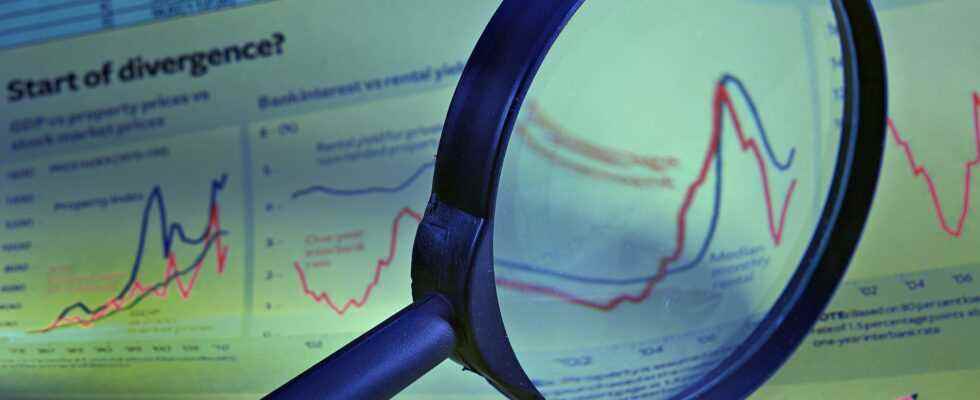(BFM Bourse) – In response to soaring inflation, many central banks have raised their interest rates in recent months. The ECB has just raised its tone by proceeding for the first time since 2011, to a more marked increase in its rates to fight against record inflation in June. Why this almost generalized movement?
The ECB this week joined the race to raise rates in which many other central banks in the world are already engaged, with an increase of 0.5 points, unprecedented for eleven years and stronger than expected. Why an acceleration in rate hikes? Because of soaring inflation: +8.6% in the euro zone in June, +9.4% in the United Kingdom, +9.1% in the United States, and sometimes even double digits in emerging countries, such as Brazil.
The ECB’s decision is still rather symbolic
Almost everyone is concerned: according to the International Monetary Fund (IMF) 75% of central banks monitored have raised their rates in the past 12 months. The US Federal Reserve (Fed) has already revised its rates upwards three times since January, going from 0.25% to 1.75%, while the Bank of England (BoE) has chained five hikes since mid-December , to go from 0% to 1.25%. “There is a kind of panic linked to the increase in inflation”, underlines Gregory Claeys, economist at the Brussels Bruegel Institute.
“They must act fast and be seen taking action to prevent inflation expectations from becoming entrenched, i.e. people expecting even more inflation” leading to a surge prices and wages, adds Paola Subacchi, professor of international economics at Queen Mary University of London.
Compared to other central banks, the ECB’s decision on Thursday is still rather symbolic, since it has just closed the page of negative rates. As for the Bank of Japan, it stands apart with rates still close to zero, even negative in the face of inflation at “only” 2.3%, close to its objectives. A decision criticized in a country more accustomed to stagnating prices since the end of the 1990s.
What are the expected effects of a rate hike?
The rate hikes aim to curb an overheating economy by restricting access to credit for households and businesses. For Europe, this policy takes “on average 18 months depending on the model”, says Gregory Claeys. Effective in slowing down demand, it is much less so against external shocks (energy, food) which are currently aggravating inflation on the continent, he warns.
This is the limit of monetary policy and the reason why the major international organizations such as the IMF and the OECD call on the States at the same time to provide temporary and targeted aid to the populations hit by the rise in prices.
Have central banks waited too long?
Major central banks have long argued that inflation is cyclical, tied to the economy’s strong recovery from the pandemic. But the wait has increased the risk of lasting inflation, in particular by triggering the dreaded price-wage loop. “The ECB has probably waited longer than the others because of its desire to put in place its tool to fight against fragmentation”, aimed at protecting the most fragile countries in the euro zone against speculative attacks, justifies Martin Wolburg, economist at Generali Investment.
The absence of a coordinated response is also linked to parameters specific to each zone: the United Kingdom struggling with the effects of Brexit, the United States facing a real shortage of jobs, and the euro zone where “the characterization inflation is less worrying than in the United States”, because linked to a supply shock, estimates Amaury Goguel, associate professor at the Skema business school in Lille.
A recession in sight?
By raising rates too much, central banks also run the risk of slowing down the economy too much, leading it into recession. If it anticipates a “gloomy” economic outlook for the EU, the ECB thinks of avoiding recession in 2022 and 2023. Too optimistic according to Mr. Wolburg, for whom the euro zone will be “on the verge of recession in the second half”.
n increased risk if the US plunges into it, dragging the global economy in its wake. However, “the indicators there are not catastrophic for the moment”, insists Amaury Goguel, “production, consumption and the job market remain positive even if the latter remains very tense. But if the recession occurs , the ripple effect would be real.”
The wait-and-see attitude of the ECB has however also brought the euro to parity against the dollar, which improves the competitiveness of exporting companies, “and the first quarterly results (of European companies) underline this”, recalls Mr. Goguel.
(With AFP)
SS – ©2022 BFM Bourse
